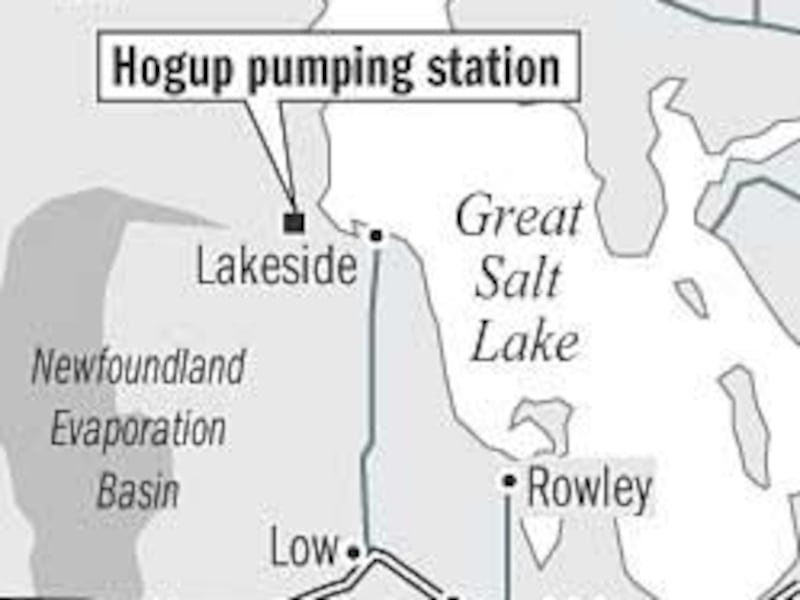Three giant water pumps could be used again to control future flooding of the Great Salt Lake, officials say, but even with record levels of precipitation, there's no threat on the horizon.
During a drought nearly two decades and $60 million ago, water passed through the three pumps in the west desert at a rate of about 1.5 million gallons per minute.
The pumps are, by his own admission, the most memorable thing about former Utah Gov. Norm Bangerter's term in office, representing an attempt to control flooding of the Great Salt Lake in the mid-1980s.
Back then, the lake's level was rapidly climbing — finally peaking at about 4,211 feet above sea level in 1987. Bangerter backed the project and the Legislature okayed the pumps in hopes they would limit damage to the nearby interstate. And for two years, the pumps pumped every day, pouring water out into the desert to evaporate.
Then things dried up.
The pumps lowered the lake's level by about 10 inches over the two years, draining about 2.73 million acre-feet of water. Meanwhile, the levels dropped more than 2 feet naturally.
A salt mineral recovery company paid to keep the pumps going so it could continue to recover minerals, but on June 30, 1989, the pumps were shut down completely.
The 2-acre facility that houses the 72-ton, 3,500-horse- power engines hasn't been used since. But while the pumps sit dormant and "mothballed," they're not necessarily collecting dust.
"We maintain them," said Lee Sporleder, an engineer for the Division of Water Resources. "We go out there once a month and lubricate them, and we have a program we do to prevent corrosion."
Sporleder regularly replaces cylinders of nitrogen in the system, which prevents water vapor from building up and damaging the pipes. Other corrosion-inhibiting packs are placed throughout the system, and he turns the pump shafts to keep the bearings in good condition.
If they were ever needed, Sporleder said the pumps could be ready to go in about eight weeks and after a few million dollars in improvements.
But even with precipitation at more than 150 percent of average in some places this year, helping pull Utah out of drought conditions for the first time in 15 years, according to the National Weather Service, Sporleder said the lake would still have to rise more than 10 feet from its current level before the pumps could be used.
"There's a possibility that they could be needed again," he said. "But it's not imminent."
As of 1:30 p.m. Friday, the lake sat at 4,197.3 feet, according to the U.S. Geological Survey. Rob Baskin, a USGS hydrologist, said the level has been pretty constant since May.
"It'll probably stay pretty steady for the rest of the summer," he said. "There is still some higher-elevation snow, but they're filling the reservoirs and diverting flow for irrigation. A lot of the water won't ever reach the lake."
So for now the pumps serve as the ultimate safety net, miles away from anything, in the middle of the desert.
E-mail: afalk@desnews.com

